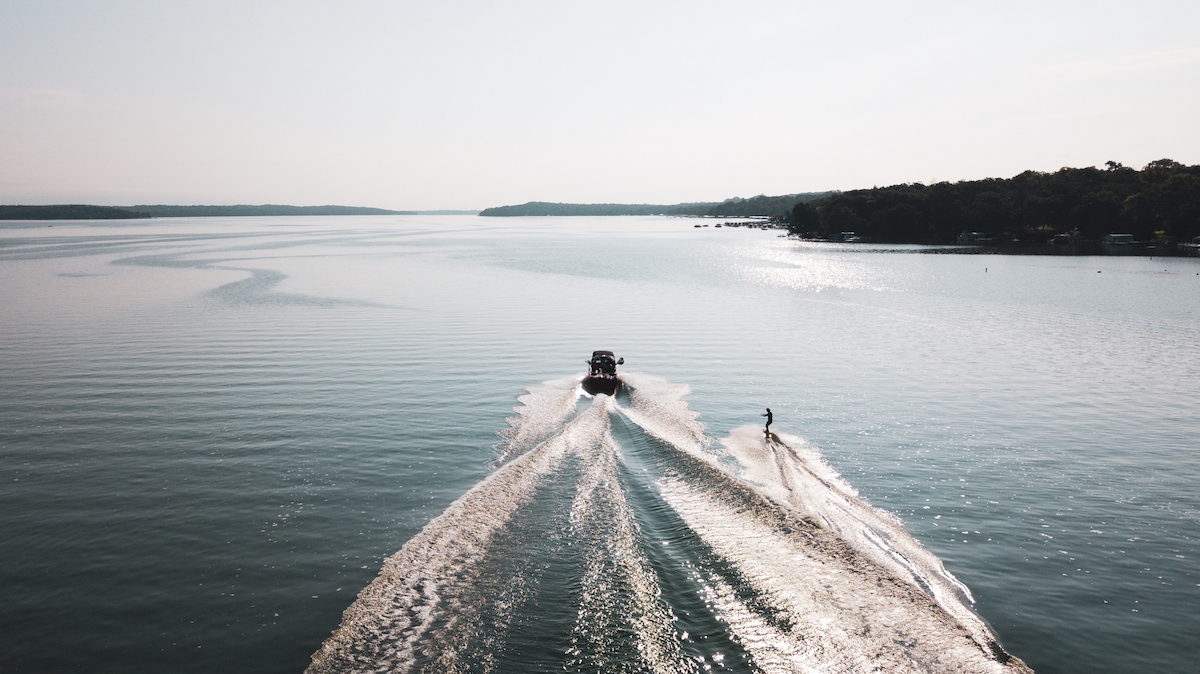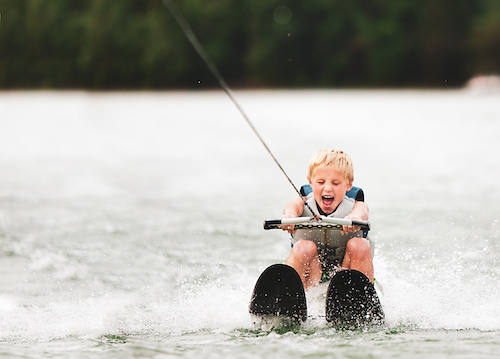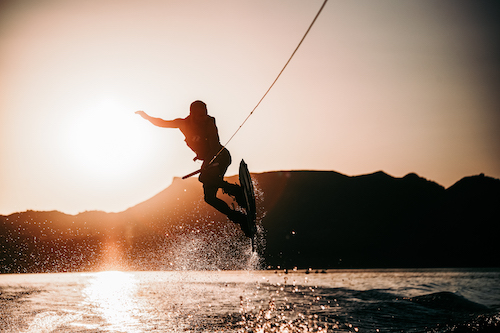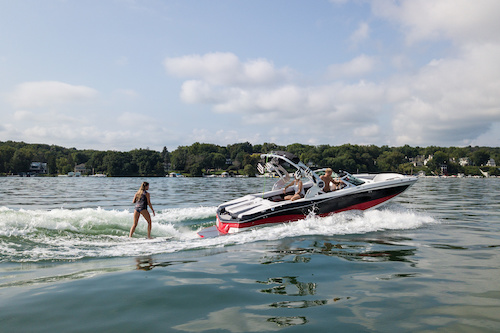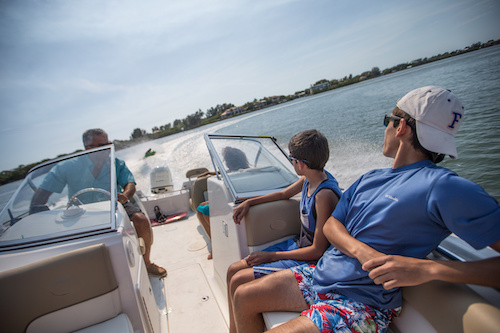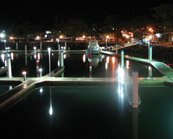It can be incredibly fun and rewarding to enjoy watersports with your own ski boat or wake boat, but the different varieties of watersports each have very specific and specialized boats that excel at taking the experience from fun to fantastic.
So let’s start out by looking at a breakdown of the different watersports activities, each of which have genre of boats designed to be ideal for their individual specialties.
Explore Ski Boats & Wake Boats
Ski Boats
Water skiing is the original watersport, and people have been enjoying this activity for just about as long as there have been planning powerboats. The ideal ski boats throw up very little wake, and the wakes are shaped so the skier can cut through them with minimal impact. Propeller turbulence should also be minimized.
To achieve this, most ski boats designed for water skiing have:
- An inboard power system with the engine located centrally in the boat;
- A relatively narrow beam (width);
- A relatively low deadrise (the amount of V shape in the bottom)
Ideally, they should cruise in the mid to upper 20 MPH range and be capable of speeds over 30 MPH, and they shouldn’t throw spray far aft or off to the sides where it might affect the skier.
Wakeboard Boats
Wakeboarding requires a bit less skill than water skiing or wakesurfing, so it’s a great stepping-stone activity for younger watersports lovers. It’s also the realm of tricksters—wakeboarders tend to enjoy doing jumps, spins, and flips.
Since wakeboards have bindings (and boards used for wake surfing do not) the rider can do aerial tricks without fear of losing contact with the board. This means that one important trait of wakeboarding boats has to do with the tow-point. It should be elevated as much as possible, and in most cases, is mounted atop a tower, arch, or elevated pedestal. That high tow-point helps the rider catch more air, and get more creative with his or her waterborne acrobatics.
Serious wakeboarding boats are also designed to:
- Create a fairly large wake that peaks 75 feet or so behind the boat, where the wakeboarder is riding;
- Most employ V-drive inboards and many have ballast tanks and/or tabs or “wake plates” that can be used to enhance the size and shape of the wake.
Wakesurfing Boats
In one very important way, wakesurfing boats are the diametric opposite of ski boats: the idea is to make as large a wake as possible, instead of a small one. But it can’t be just any old wake. Wake surfers like a wave with a clean peak, like a cresting breaker on the beach. And it should peak close to the boat, sometimes within 10 feet or less of the transom, where the serious surfing gets done.
Since wake surfing takes place without any attachment to the boat (surfers usually use a tow-rope to get started, then pitch it away and surf on their own afterwards) having those ideal wakes is critical for the rider to be able to maintain his or her position, as well as perform stunts and tricks.
To attain the size and shape surfers need, wake surf boats often have a number of wake-adjusting features:
- Ballast tanks are common, and may be used to double the weight of the boat and generate a correspondingly huge wake.
- Plates and tabs mounted at the transom may also be employed to both enlarge and shape the wake.
- In some cases these tabs and plates can not only be adjusted to make the ideal wake, but also to shift it from one side of the boat to the other, on the fly as the surfer rides the waves.
Wakesurfing: How to Get Started
Kneeboarding Boats
Kneeboarding, where the participant sits on his or her knees on the board, is generally considered an “entry level” form of watersports and in terms of difficulty is a step up from tubing, but a step down from wakeboarding. As a result, there isn’t much specialization needed in the boat itself. In fact, many people enjoy kneeboarding behind bowriders, deck boats, or cross-over boats like fish-and-skis.
The exact size and shape of the wake is less imperative in this case, so various boat designs and powerplants may be employed. In fact, you can have a thrilling kneeboard ride behind just about any type of boat.
Tubing Boats
Tubing is where many watersports enthusiasts got their start, and it’s common for kids of all ages to jump overboard for a day of tubing. As a beginner sport, the type of boat you use for tubing is not a critical factor. Essentially, all you need is a boat with tow points, a tow rope, a tube, and some people who are ready to get wet and have a boatload of fun.
Tubing is also the only towed watersport that can be done socially; there are plenty of two-, three-, and even four-person tow-tubes out there that you can load up and take for a joy ride.
What Watersports Boat is Right for You?
So, which of these types of watersports boats will be best for you, personally? That’s a question that only you can answer. Just remember that the more specialized boats designed specifically for one sport in particular will likely be better at their mission than cross-over or multi-tasking boats. But on the flip side of the coin, less specialized models give you more flexibility in which of these activities you’d like to enjoy on any given day.
When all is said and done, one thing is for sure: the only thing more fun that riding around in a boat is being towed or surfing behind one.
Read Next: Comparing Jet Boats vs. Sterndrive (Prop) Boats
You Might Also Like:
